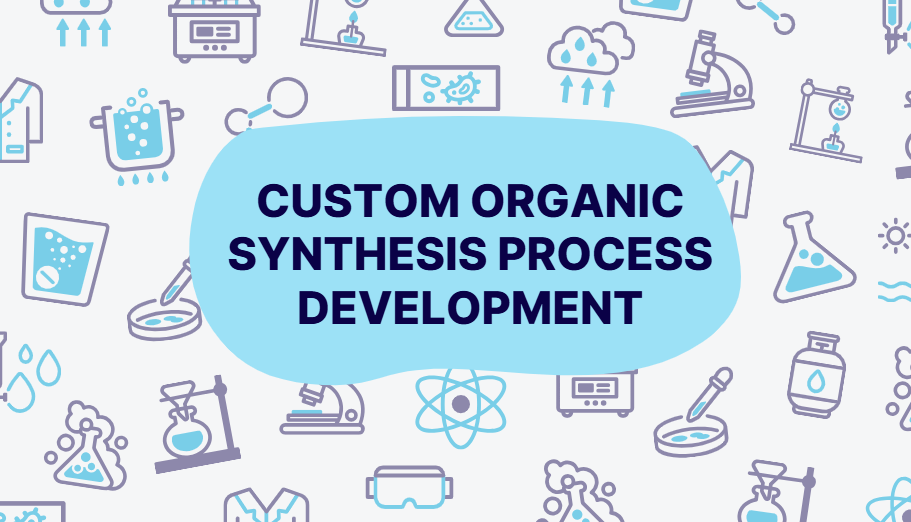The development of smart polymers represents a transformative step in material science, enabling the creation of responsive systems that adapt to external stimuli. Smart polymers, also known as stimuli-responsive or intelligent polymers, change their physical or chemical properties in response to triggers like temperature, pH, light, or specific biomolecules. At the heart of this innovation lies custom polymer synthesis, which allows precise tailoring of polymer structures to meet specific functional requirements.
This article explores the diverse applications of custom polymer synthesis in smart polymers, highlighting their role in advancing industries such as healthcare, environmental science, and electronics.
What Are Smart Polymers?
Smart polymers are materials that exhibit a reversible change in behavior or properties when exposed to specific external stimuli. These stimuli can include:
- Physical stimuli: Temperature, light, magnetic fields, and pressure.
- Chemical stimuli: pH changes, ionic strength, and specific biomolecular interactions.
- Biological stimuli: Enzyme activity or the presence of specific antigens.
Why Custom Polymer Synthesis?
Custom polymer synthesis enables:
- Precise control over molecular weight, branching, and composition.
- Incorporation of functional groups for specific responsiveness.
- Creation of hybrid materials combining multiple stimuli-responsive properties.
Applications of Smart Polymers Enabled by Custom Polymer Synthesis
1. Biomedical Applications
Smart polymers have revolutionized drug delivery, tissue engineering, and medical devices.
Drug Delivery Systems
Custom polymers are synthesized to release drugs in response to specific triggers, such as:
- pH-sensitive polymers: Deliver drugs to acidic tumor environments or the stomach.
- Thermo-responsive polymers: Release drugs at body temperature or during fever conditions.
- Enzyme-sensitive polymers: Target areas with specific enzymatic activity, such as inflamed tissues.
Tissue Engineering
Custom smart polymers serve as scaffolds that mimic the extracellular matrix, supporting cell growth and differentiation. These scaffolds respond to changes in temperature or pH, aiding in controlled tissue regeneration.
Self-Healing Materials
In medical devices, self-healing polymers repair minor damages autonomously, improving device longevity and reliability.
2. Environmental Applications
Smart polymers are employed in sustainable technologies to address environmental challenges.
Water Purification
- Temperature-sensitive hydrogels: Remove heavy metals or organic pollutants by undergoing phase transitions.
- pH-responsive polymers: Capture and release pollutants depending on the acidity of the water.
Waste Management
Custom polymers in biodegradable plastics degrade under specific environmental conditions, reducing plastic pollution.
Smart Coatings
Self-cleaning and anti-corrosive coatings adapt to environmental changes, extending the life of infrastructure.
3. Electronics and Optoelectronics
Smart polymers are critical in the development of next-generation electronic devices.
Flexible Electronics
Custom polymers create stretchable and flexible substrates for wearable sensors and displays.
Conductive Polymers
Smart conductive polymers are synthesized for use in organic solar cells, light-emitting diodes, and electronic skins.
Optical Sensors
Light-responsive polymers change color or transparency, enabling applications in smart windows and adaptive lenses.
4. Agriculture
Custom smart polymers have enhanced agricultural practices by improving resource efficiency and crop yields.
Controlled Release Fertilizers
Polymers respond to soil moisture or temperature, releasing nutrients as needed by the plants.
Smart Seed Coatings
Temperature- and moisture-sensitive coatings ensure optimal germination conditions for seeds.
Pest Control
Polymers release pesticides or repellents only under specific conditions, minimizing environmental impact.
5. Textile Industry
Smart textiles incorporate custom polymers for adaptive clothing and advanced performance.
Thermo-Responsive Fabrics
Clothes that adjust insulation properties based on temperature, improving comfort in varying climates.
Moisture-Responsive Fabrics
Polymers that wick sweat away or become waterproof under certain conditions.
Color-Changing Fabrics
Light- or pH-responsive polymers create clothing that changes color for fashion or safety purposes.
Examples of Smart Polymers Designed via Custom Synthesis
- Poly(N-isopropylacrylamide) (PNIPAAm):
- A thermo-responsive polymer widely used in drug delivery and tissue engineering.
- pH-sensitive Poly(acrylic acid) Derivatives:
- Employed in oral drug delivery to target release in the gastrointestinal tract.
- Shape-Memory Polymers:
- Custom polymers that recover their original shape upon exposure to heat or light, used in medical implants and aerospace.
- Photo-Responsive Polymers:
- Used in smart windows and dynamic optical devices.
Future Directions
1. Multi-Responsive Polymers
Custom polymer synthesis is enabling the creation of polymers that respond to multiple stimuli simultaneously, such as pH and temperature, broadening their applicability.
2. Integration with Nanotechnology
Combining smart polymers with nanomaterials offers new capabilities, such as enhanced drug targeting and environmental sensing.
3. Sustainability
The development of bio-based and biodegradable smart polymers addresses the growing demand for sustainable materials.
ResolveMass Laboratories: Pioneering Custom Polymer Synthesis
At ResolveMass Laboratories, we specialize in the custom synthesis of smart polymers tailored to your specific application needs. Our services include:
- Design and Synthesis: From concept to scalable production.
- Analytical Testing: Comprehensive characterization to ensure quality and performance.
- Regulatory Support: Guidance through compliance for biomedical and industrial applications.
- Custom Polymer Synthesis
- Advanced Material Testing
- Smart Polymer Solutions
Contact Us to discuss your project and explore how we can drive innovation together.
References
- Roy, D., et al. (2010). Smart Polymers: Emerging Applications. Progress in Polymer Science. DOI: 10.1016/j.progpolymsci.2010.01.002
- Stenzel, M. H. (2006). Bioconjugation of Smart Polymers and Proteins. Macromolecular Bioscience. DOI: 10.1002/mabi.200500172
- Zhang, Q., et al. (2020). Multi-Responsive Smart Polymers. Chemical Reviews. DOI: 10.1021/acs.chemrev.9b00576

